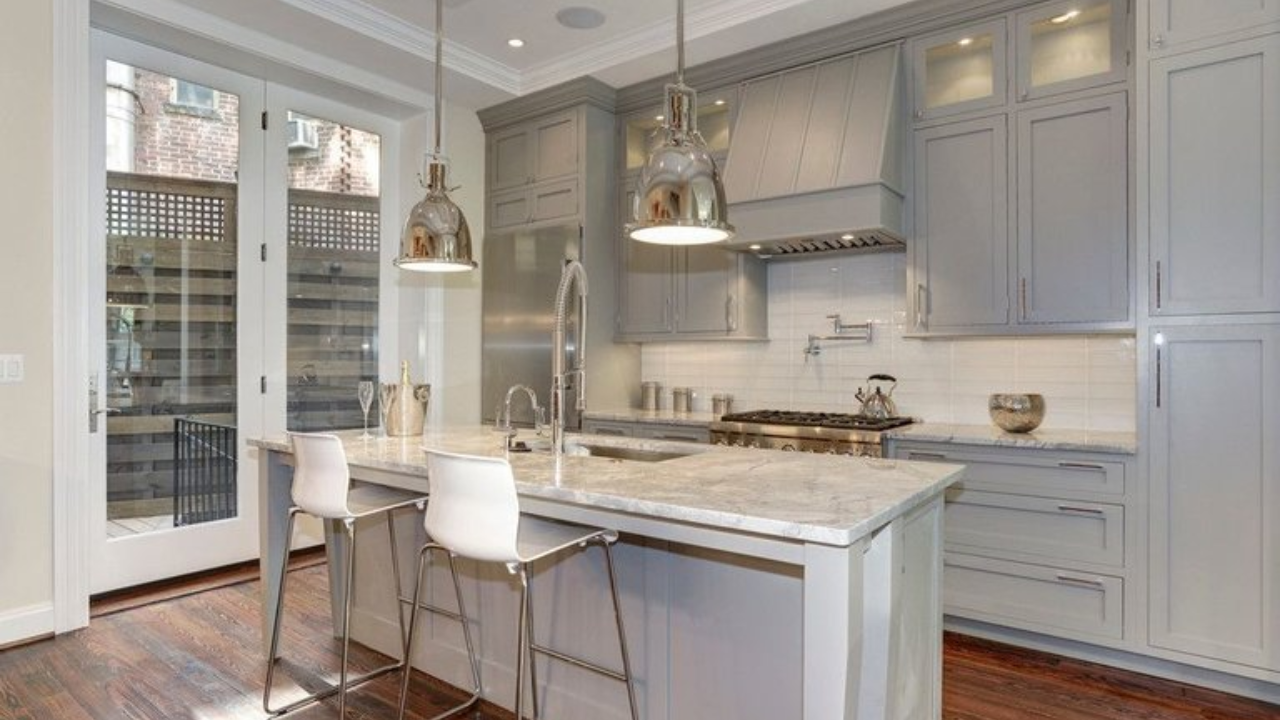Are you looking to remodel your home’s heart, the kitchen? If so, you may know that kitchen remodelling is about creating a space that combines style, modernity, and comfort.
Whether you’re looking to refresh your kitchen or embark on a complete renovation, here are seven kitchen remodelling designs you should avoid to ensure your space remains functional and stylish.
Interestingly, according to the survey conducted in 2022-2024 on kitchen remodelling, 42% of US respondents were motivated to remodel their kitchen because they wanted something new.
At the same time, some trends and kitchen remodelling services seem appealing initially, but they can lead to a wrong decision about renovating the kitchen.
Whether you’re looking to refresh your kitchen or embark on a complete renovation, here are seven kitchen remodelling designs you should avoid to ensure your space remains functional and stylish.
1. Overly Trendy Designs
While it’s tempting to incorporate the latest design trends into your kitchen, overly trendy choices can quickly become outdated. A kitchen renovation is a significant investment, so opting for fleeting trends may result in you needing another remodel sooner than expected.
For example, open shelving, popular a few years ago, might seem like a great way to display your beautiful crockery. However, it requires constant maintenance and doesn’t provide enough storage. Similarly, bold color choices for cabinetry, such as neon shades or ultra-dark hues, may feel modern now but can make your kitchen look outdated or uninviting in just a few years.
To avoid this, stick with timeless designs and neutral tones for key elements like cabinetry, countertops, and flooring. These elements will withstand the test of time and provide flexibility should you decide to update other features down the road.
2. Lack of Storage
A kitchen without adequate storage is not only impractical but can also feel cluttered. One common mistake is underestimating how much storage you’ll need in the kitchen, particularly for larger families or those who cook frequently. Small cabinets or poorly planned spaces often fail to accommodate daily items, and clutter can quickly build up.
To avoid this mistake, maximize your storage by incorporating cabinets that go up to the ceiling. Pull-out pantry shelves, corner cabinets with rotating shelves, and pull-out organizers for pots and pans are great ways to ensure your kitchen remains tidy and functional. When remodelling, think about long-term practicality rather than just aesthetics.
3. Ignoring Work Triangle Principles
The work triangle principle refers to the layout between the three main areas of the kitchen: the sink, stove, and refrigerator. The ideal kitchen layout places these three zones triangularly, allowing for efficient movement between them. Unfortunately, many remodels need to pay more attention to this principle, leading to efficient kitchen designs that make cooking difficult.
When remodelling your kitchen, be sure to keep the work triangle in mind. Ensure that the sink, stove, and refrigerator are spaced appropriately so you’re not constantly walking from one end of the kitchen to the other. If you have space, an island or breakfast bar can be a great addition, but avoid overcrowding the central area.
4. Too Much or Too Little Counter Space
Counter space is an essential component of any kitchen. It’s where you’ll prepare meals, gather with family and friends, and often place items like keys, bags, and mail. A lack of counter space can make a kitchen feel cramped and inefficient, while too much space can create a disconnected feeling or waste valuable square footage.
The key to avoiding this design pitfall is balance. Ensure you have enough counter space for food prep, but also avoid overwhelming the space with unnecessary additions. For example, an oversized island may take up too much room if you have a smaller kitchen. When planning, think about your daily routines and create a layout for how you cook and use your space.
5. Overly Complicated Layouts
Complex, multi-level designs or overly intricate layouts may seem sophisticated, but they often lead to confusion and inefficiency. A kitchen should be where everything flows smoothly, and an overly complex layout can hinder the user experience. In addition, it may create more maintenance issues or unnecessary steps during meal prep.
Avoid unnecessary elements like multiple levels of countertops or an excessive number of cabinets. Stick to straightforward, open layouts that provide easy access to everything. A simple, streamlined design can make the space feel more expansive and functional, which is ideal for any kitchen.
6. Poor Lighting Design
Lighting is one of the most crucial elements in a kitchen. Even the most well-designed kitchens can feel dreary and uncomfortable without proper lighting. Common mistakes include relying solely on overhead lighting or using a single light source for the entire kitchen. This can result in poorly lit work areas, making cooking, cleaning, or entertaining hard.
To avoid this, incorporate multiple layers of lighting, including task, ambient, and accent lighting. Task lighting should illuminate work areas like countertops, while ambient lighting creates a soft glow throughout the room. Accent lighting, such as under-cabinet or pendant lights over the island, can add style and functionality.
7. Neglecting Ventilation
Good ventilation is essential for maintaining a comfortable and healthy kitchen environment. Without proper ventilation, your kitchen may accumulate excess heat, moisture, and cooking odors, affecting air quality and creating unpleasant smells. A common mistake is paying attention to installing a high-quality range hood or exhaust system, especially in open-concept kitchens.
To avoid this mistake, ensure your kitchen has a proper ventilation system that clears smoke, steam, and odours from the cooking area. A robust range hood or a well-placed window can go a long way in keeping your kitchen fresh and pleasant.
Conclusion
A successful kitchen remodel blends aesthetics with practicality, and the key to achieving this is understanding what works best for your space. Avoiding these common design pitfalls—like overly trendy designs, lack of storage, inefficient layouts, and poor lighting—will ensure your kitchen is where you’ll want to spend time. By focusing on functionality, timelessness, and thoughtful planning, you can create a beautiful and efficient kitchen, making meal prep and entertaining a joy. Always think ahead and remember that your kitchen is a space meant to work for you, not against you.



























